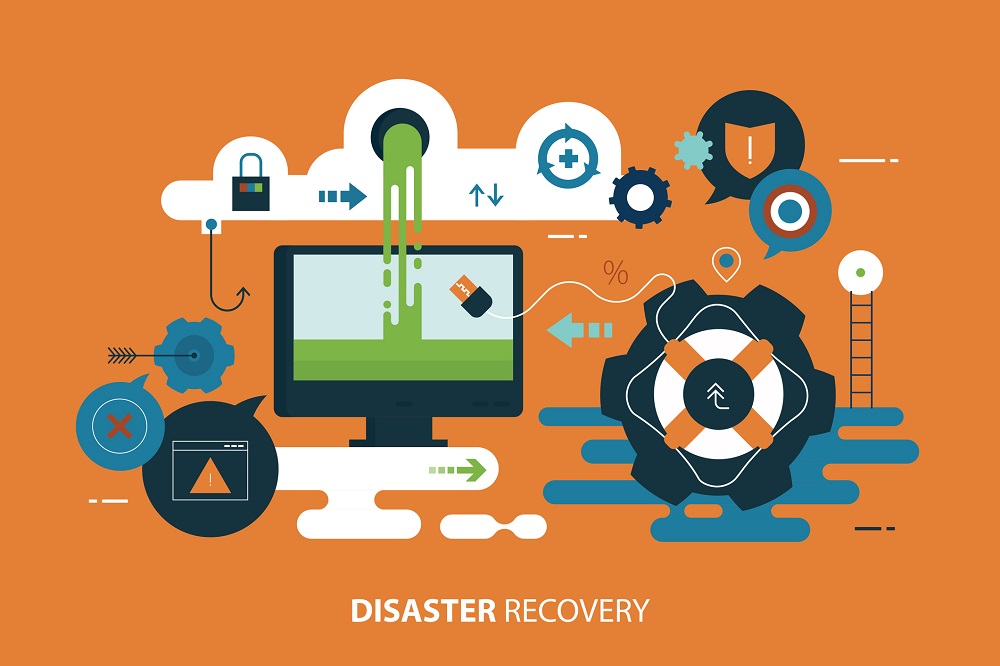A cloud disaster is a disruption of data or network access caused by a natural disaster, human error, or technical failure. It hinders recovery processes and recovery time objectives (RTO). Cloud disaster recovery planning seeks to ensure that business operations can continue as normal despite the disruption of data center services.
In this blog, we will discuss the effect of cloud disasters on your business and the steps you need to follow to recover from them.
What is a cloud disaster?
A cloud disaster is a situation in which your business loses access to data or applications stored in the cloud. It can happen for a number of reasons, including a provider’s failure, network outage, data center disaster, or malicious attack. While it might seem like a remote possibility, it’s important to plan for and prepare for a cloud disaster.

There are different types of cloud disasters, each with its own set of risks and consequences. For instance, a provider failure could result in the loss of data or applications. You can minimize the risks associated with a cloud disaster by taking steps such as preparing and rehearsing for the event. This includes planning backup strategies and rehearsing recovery scenarios with your team and stakeholders. If a disaster does occur, it’s critical to remain calm and take action systematically. Don’t panic – there is help available.
Effect of cloud disasters on businesses
A disaster recovery plan should be a part of a business’s continuity plan. Knowing how to respond in the event of a cloud disaster can help businesses minimize the impact on their operations and data.
There are various types of cloud disasters, and businesses should be aware of each type and prepare for it accordingly. Businesses should have the plan to restore data after a cloud disaster, so they can recover from any disaster with minimal downtime or loss of data.
Businesses should regularly test their Disaster Recovery Plans and procedures, particularly after updating them, to ensure that they are up-to-date and functioning properly. This will help them minimize downtime during a disaster and minimize the impact on business operations.
Preparation steps for a cloud disaster
Before a cloud disaster strikes, it’s critical to take the time to plan and prepare. This will help ensure you’re ready for any situation and able to recover quickly and efficiently if a disaster occurs.
The first step is to identify your cloud services and their vulnerabilities. This will help you identify potential points of failure and plan recovery strategies accordingly. The next step is to plan and execute a disaster recovery strategy. This should include identifying backup data storage locations, creating backup plans, and determining recovery time objectives (RTOs) for your business. Finally, it’s vital to prepare your team and equipment for a potential cloud disaster. This includes training employees on disaster recovery procedures, testing backup processes regularly, practicing recovery scenarios, and updating disaster recovery plans as necessary.
The final step is to stay informed about the latest developments in the cloud technology space. This will allow you to plan ahead and ensure you’re fully aware of potential risks and hazards associated with using cloud technology.
Critical tasks to be performed in a cloud disaster scenario
Critical tasks to be performed in a cloud disaster scenario include:
– Back up your data: Make sure you have a full backup of all your data stored in the cloud. Ensure that your backup solution is capable of backing up data to an external hard drive or another storage device on a continuous basis for recovery in the event of a disaster. Also, make sure your backup solution has disaster recovery functionality, such as a secondary copy or backup server.
– Evacuate users: Immediately notify all employees of your business about the evacuation plan and instruct them to take appropriate precautions. This could include closing doors and windows and turning off computers, TVs, lights, and other electronic devices.
– Clear network routes: Remove any obstructions on your network that could slow down or block traffic during a cloud disaster. This could include blocking access to switch ports on servers.
– Mitigate damage: Take measures such as activating your fire alarm and closing off critical areas to protect yourself and your employees from potential injury or damage. This could include taking shelter inside a safe room or building, turning on the gas shutoff valve if it’s necessary to protect homes from explosion or fire, and ensuring that water pumps are operational.
– Respond rapidly and calmly: Do not panic and remain calm during a cloud disaster. It’s important to remain objective and make sound decisions based on the situation at hand.
Cloud disasters and business continuity
To prepare for a disaster of a cloud-based business, it is vital to understand the risks of cloud computing and how they may impact your business. A disaster recovery plan should be in place to plan for potential data loss. This plan should include a backup plan and strategies for recovery, recovery areas, recovery time frames, and recovery teams. Additionally, it is important to establish a comprehensive communications plan in the event of a disaster. This plan should include detailed plans on monitoring servers, network infrastructure, and data center devices. Last but not least, it is vital to train employees on disaster preparedness and response procedures so that they can be ready if a disaster strikes. By taking these preventive measures before a disaster strikes, you can reduce any potential losses from a cloud disaster.
Conclusion
A cloud disaster is a situation in which a data center fails or a cloud-based service is unavailable. If a cloud disaster happens, it can be a time-saver for business owners and managers because it allows them to access data, data centers, and applications from remote locations. But it can also cause severe disruption when an organization is unable to access data, applications, and data centers. If you’re planning to plan for a cloud disaster in your business, follow the above-mentioned steps carefully. Comment below if we have missed any vital point that would help you prepare for a cloud disaster.

